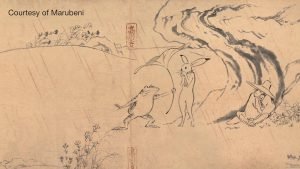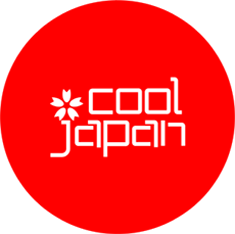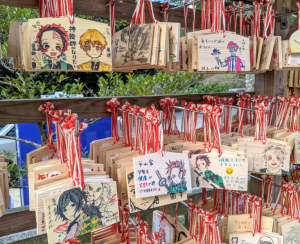Ask a teenager or a young adult their favorite anime or manga today. Chances are very high that they will reply with the name of a particular anime show or manga work. Even if that is not the exact case, you will hardly come across a Gen Z or young millennial who has not at the very least heard of anime or manga, or doesn’t know what it is.
A Conflicting History of Perceptions: How did we end up here?
A decade ago, anime and manga were not this commonplace. Even if someone did watch anime or read manga, they would likely not disclose this due to fear of social ostracization. There used to be a negative value attributed to this form of entertainment – whether that be in terms of it being defined as children’s stuff or as an unsophisticated addiction. Until recently, the words ‘otaku’ and ‘weeb’ (now prevalent as the defining labels of an anime-manga fan) were close to insults, even within home country Japan. What’s lesser-known is the fact that ‘otaku’ can be traced back to having originated in Japanese culture as a derogatory term for an anime/manga ‘addict’ who couldn’t see life beyond 2D fiction.
This history begs the question: How did anime and manga become such a global phenomenon in contemporary times?
More importantly perhaps, what has been Japan’s actual relationship with anime and manga?
Ancient History: Manga in J-Culture
Although the origins of ‘otaku’ are less than respectable, manga and anime have in fact been central to the Japanese entertainment scene for centuries. This is particularly true for manga, which although taken as ‘comics’, hold a deeper significance for the Japanese people.

According to a davidcharlesfox.com article, one can find the history of manga stretching as far back as the 17th century Tokugawa period in Japan. The grandfather of the modern-day printing press – the Gutenberg model, was not as widespread back then. That did not deter the production of manga – woodblock prints produced sophisticated illustrations which were the favourite of both masses and elite.
Turning Point: World War II
World War II marked an enormous boost for the animation industry worldwide – with war animations coming out of both camps as part of their soft power hegemony tactics. The Japanese animation industry likewise flourished – manga began drawing inspiration from American counterparts, and the anime industry grew leaps and bounds. Influenced particularly by the works of Disney, Japanese anime soon established itself as an unparalleled art in its own right. From a special anime art style, a wide range of genres, to solid and out-of-the-box plotlines, everything about anime became distinctively Japanese and novel for global audiences.
In many ways, manga was considered the parent of anime. This is obvious in the many anime adapted from manga. This is not to say that the former has no originality of its own. Many anime shows and movies don’t have a manga foundation, and many animated adaptations have ended up winning more hearts than the manga those are based on. Anime has, furthermore, been the vehicle of taking Japanese culture to global consumers because of its easy availability on digital platforms. From the 1960s, it began to slowly build a consumer base across the world, but graphs on a temporal growth of anime consumption would not reveal that so easily.
The Scenario till 2013
Till 2013, and this is specifically applicable to manga, you wouldn’t have found anime-manga that easily accessible. This was partly because of the absence of the myriad digital platforms we have today, even more so legal ones. But the main factor had been the Japanese home market.
Manga and anime have been a youth favourite in Japan for decades. Till 2013, the internal market demand had been more than sufficient to fuel the anime-manga industry. Although a flourishing cultural scene, these two largely remained restricted to national boundaries. Some statistics show practically zero legal consumption of anime and manga outside Japan. This indicates two things. First, the Japanese producers didn’t feel the need to diversify their consumer base beyond Japan through legal portals. Second, even the illegal consumption of manga and anime globally was not as pervasive as it is today. The latter aspect is an area of further research, but it is not far-fetched to assume limited numbers of anime-manga fans worldwide in the early 2010s.
Manga and anime have always been crucial aspects of Japan’s entertainment culture. The derogatory origins of ‘otaku’ thus could have had more to do with an extreme form of addiction to these mediums.
‘Cool Japan’: Foreign Policy
2013 represents the first comprehensive attempt to take an international market-oriented approach to manga and anime marketing. This attempt took the shape of a government-led campaign called the Cool Japan Fund. The campaign was part of Japan’s cultural foreign policy- to boost demand for Japanese products and services by investing in-home businesses, promote Japanese arts and culture overseas, and create a global network for marketing Japanese cultural products.

The fund stands for government support for the Japanese cultural industry for the first time ever. In 2019, the Japanese government invested USD 30 million in US anime distributor Sentai to expand the platform for Japanese content. This financial support is not only limited to anime and manga. According to the official Cool Japan portal, the Japanese government has consistently supported the expansion of Japanese sake consumption worldwide.
Japan and Cultural Influence
A country’s strength is nowadays often measured in terms of its cultural spread worldwide. The presence of the cultural symbols creates an interest in the country as a whole. This, in turn, boosts the domestic tourism industry and the number of people migrating to the country to work, study and live. The Cool Japan policy has turned its culture, including anime and manga, into symbols of its global eminence. But what do the experts say?
For all that it’s worth, the Cool Japan policy has been termed a failure by experts. Its investments have flooded international markets with anime and manga. But government policies haven’t been able to secure the top position for Japan in international soft power calculations. In 2019, Japan’s soft power index score was 30- which is better than most. However, considering the volume of its investments, the score should ideally have been higher.
But this is not to say that it doesn’t have its successes. Japan has grown leaps and bounds in terms of the popularity of its culture over the years. According to a UK survey done by Monocle, Japan ranked third in cultural influence in 2018-19 while France ranked 1. Japan rose to rank 2 in another survey done in 2020, while Italy possessed the apex spot. While anime and manga are not the only reasons for this ranking, these have certainly played a significant role in hyping Japan globally.
Media Mix and Media Sophistication
In the youth scene, you’ll often find anime and manga being defined as ‘cool’. Part of what makes anime and manga cool is media mix and media sophistication. In layman terms, media mix essentially means taking anime and manga beyond their original platforms and storylines. This can take the shape of AU spinoffs in anime shows, chibi versions, soundtracks and audios, movies, live-action versions, video game adaptations and fan merchandise. Taking this mix further are efforts by the fan themselves to relive their favourite anime or manga. This takes the form of cosplays, fan books, fanfictions and fanart. All these diversified mediums cater to what is called “consumer aesthetics.” This is nothing but the tendency to see the world in an animated way.

The storylines and plots of anime and manga need to be credited here. The art styles are favourites of many, and plotlines usually have twists that are a pleasure to follow. The sheer magnitude of the number of genres out there ensures that there is an anime or manga for everyone. Just the show or comic is not enough- fans demand the ability to immerse their realities with their favourite fantasies. Japan has catered to that through its themed cafes and branded goods to help fans embody themselves with their favourite fictional world.

Today, this media sophistication has taken a step further. Take for example the case of the Kamado Shinto shrine in Fukuoka prefecture of Japan. The shrine has become a must-visit for fans of the anime Demon Slayer. That is because they have correlated the family name of that old shrine with the family name of the principal anime protagonist. The mere presence of “Kamado” has turned the shrine into a fandom site. To capitalize on this opportunity, those who run the shrine have also incorporated characters from the anime at the site. In another instance, traditional culture is also picking up on the popularity of new generation anime. In a video available on YouTube, one can find a group of traditional Japanese instrumentalists playing their rendition of Demon Slayer’s famous opening theme ‘Gurenge’.
What to Conclude?
In the end, several reasons have contributed to the hype of anime and manga worldwide. To some degree, the desire to stay relevant and peer pressure has played a role in intensifying the consumption of anime and manga. It may not necessarily be a bad thing, as long as one maintains a balance between fiction and reality. My views may be biased though- since your author is a weeb herself!
To read more on the rise of Korean culture, click here.
